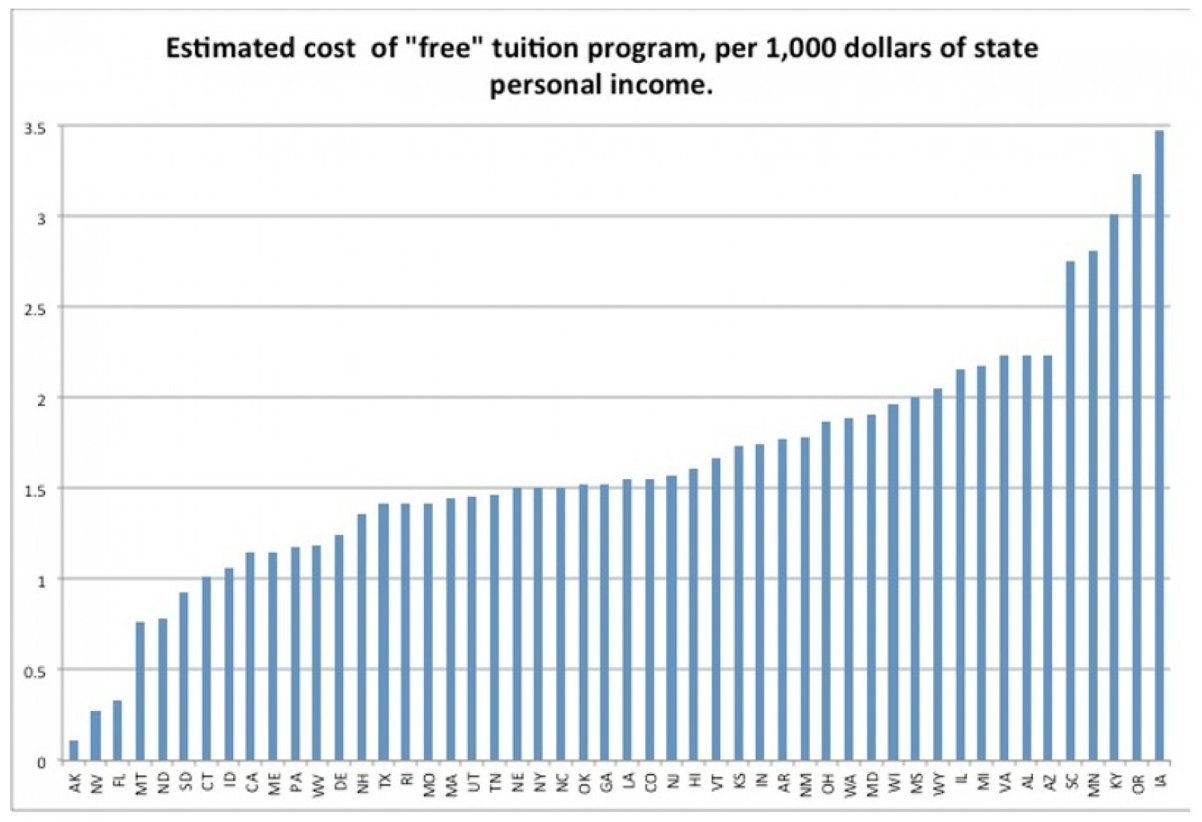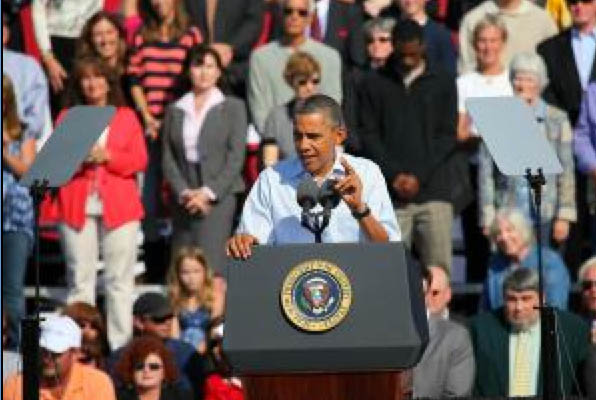 President Obama has announced that he has a proposal to make community college tuition free. The Washington Post has an article written by two economics professors that look into the idea of “free” community college tuition as proposed by President Obama, and they also looked at the fiscal impact on each state — needless to say this is not a good idea.
President Obama has announced that he has a proposal to make community college tuition free. The Washington Post has an article written by two economics professors that look into the idea of “free” community college tuition as proposed by President Obama, and they also looked at the fiscal impact on each state — needless to say this is not a good idea.
A week has passed since President Obama released his “free” community college proposal, and the broad outlines of the pro- and anti-positions are now discernible. Unemployment rates for people with more education than a high school degree are indeed lower, and their incomes are substantially higher. The job market of the future will undoubtedly shift toward jobs that require more than high school level skills. Free community college will indeed shift some students out of for-profit schools with low graduation rates that saddle graduates and non-graduates alike with very high levels of student debt. On the other side, we hear that students should have some skin in the game, for-profit schools are the innovative future, some college grads seem to be working in low-level jobs that don’t require fancy degrees, and more federal subsidy will just push up tuition. In addition, the proposal is supposedly dead on arrival anyway because it adds to the federal deficit and federalizes what should be a state decision. Anyone who is minimally aware should be able to see the left-right divide in this list of reactions.
In a short essay, we cannot separate the wheat arguments from the chaff. Instead, we offer two arguments and one bit of evidence to show the true complexity of this issue.
One of the program’s goals is to break down the financial barriers that keep many students from pursuing a useful certificate or degree. Two free years at a community college supposedly will make a four-year bachelor’s degree more affordable. Yet four-year colleges and universities depend on larger classes taught to first and second year students to keep cost down. These larger introductory classes are the flip side of the smaller and more teacher-intensive upper level classes of the final two years. The upper division courses are the ones that truly prepare students for a job market that prizes advanced training in technical and non-technical fields alike. If the proportion of freshmen and sophomores at four-year universities falls, this could push up the cost of a four-year degree for students who go directly to places like Ohio State or Oregon. Welcome to the “law of unintended consequences.”
In a similar vein, recent research shows that students who could do well at a four-year school but who choose to begin at a community college are less likely to graduate than their peers who go directly to a four-year school. Inducing students to go to college is a good thing, especially if their alternative is a low-paying dead-end job. But inducing students to switch from a four-year program to a “free” community college is a more nuanced outcome.
Lastly, the politics of this program are far from obvious. The chart below shows an estimate of the initial fiscal cost of making community college “free” in each state, measured as dollars per thousand of that state’s personal income. We say “initial” and “estimated” because we have no way to know precisely how many current students would qualify for aid (those in the appropriate programs with the requisite GPA) and how many more students will move into the system. Even without that extra knowledge, it’s clear that there is a lot of variation nationally. In Florida, for instance, the cost is 33 cents per thousand. In Kentucky, it’s three dollars and a penny.
Since the federal government is picking up ¾ of the tab, states like Iowa, South Carolina, and Arizona (the latter two quite red), would be clear net recipients of federal money even though they would have to kick in some extra cash themselves (the other ¼). How would South Carolina’s leadership react? Not sure.
“Fiscal cost” is the listed tuition times the number of students enrolled. That’s the cost that will have to be split between the feds (3/4) and the state (1/4) if you make CC free. This “fiscal cost” measure is really an “initial” cost, since it could grow if the number of enrolled students rises as a consequence of the price cut. But it’s a good starting place for the discussion. And this “fiscal cost” is based on an assumption that every student qualifies, which clearly is an overestimate. Some students wouldn’t qualify, either because their grades are too low or because they are not enrolled at least half-time. But we don’t think that students in Iowa, for instance, routinely get lower (or higher) grades than students in Florida. What we’re trying to show is the fact that there is a lot of variability among states, which comes out pretty clearly in that picture. The fiscal effects vary substantially.



